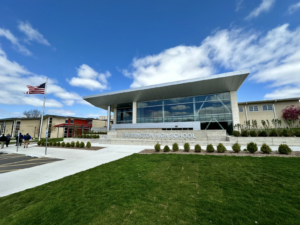How to Fix Our Schools

In case you missed it, here’s the WaPo ‘manifesto‘ on how to fix our schools by system heads Alonso, Brizard, Gorman, Grier, Johnson, Klein & Rhee, Vallas and others. The main thrust is emerging performance-focused employment bargain that incorporates student achievement data and rewards performance. The system heads suggested moving beyond birthdays to progress based on performance and the development of a portfolio of options (i.e., improve existing schools and open new charter schools).
The new conventional wisdom arrived in full force in 2010 with documentaries, monster grants, and targeted guerilla fighting from DFER and friends. Old assumptions and alliances are being challenged as Sacramento mayor Kevin Johnson pointed out at a DFER kick-off in Seattle. When a traditional liberal told KJ that we needed to solve poverty and catch kids in preschool or all was lost. KJ, an Education Equality Project signatory, told her that schools can change lives and communities–they are the best weapon we have against generational poverty.
Because the new conventional reform wisdom ( ‘get better teachers’ and ‘open more charters’) takes a long time and won’t work as well as hoped, the op-ed nods awkwardly at the innovation agenda (“online learning and other programs”). It will take new tools and new schools to regain global education leadership and give US kids the education they deserve. But it’s nice to see system heads uniting around a common sense agenda backed up by the evidence of improvement.
——–
All of us have taken steps to move our students forward, and the Obama administration’s Race to the Top program has been the catalyst for more reforms than we have seen in decades. But those reforms are still outpaced and outsized by the crisis in public education.
Fortunately, the public, and our leaders in government, are finally paying attention. The “Waiting for ‘Superman’ “documentary, the defeat of D.C. Mayor Adrian Fenty, Facebook founder Mark Zuckerberg’s $100 million gift to Newark’s public schools, and a tidal wave of media attention have helped spark a national debate and presented us with an extraordinary opportunity.
But the transformative changes needed to truly prepare our kids for the 21st-century global economy simply will not happen unless we first shed some of the entrenched practices that have held back our education system, practices that have long favored adults, not children. These practices are wrong, and they have to end now.
It’s time for all of the adults — the superintendents, educators, elected officials, labor unions and parents — to start acting like we are responsible for the future of children. Because right now, across the country, kids are stuck in failing schools, just waiting for us to do something.
So, where do we start? With the basics. As President Obama has emphasized, the single most important factor determining whether students succeed in school is not the color of their skin or their ZIP code or even their parents’ income — it is the quality of their teacher.
Yet, for too long, we have let teacher hiring and retention be determined by archaic rules involving seniority and academic credentials. The widespread policy of “last in, first out” (the teacher with the least seniority is the first to go when cuts have to be made) makes it harder to hold on to new, enthusiastic educators and ignores the one thing that should matter most: performance.
A 7-year-old girl won’t make it to college someday because her teacher has two decades of experience or a master’s degree — she will make it to college if her teacher is effective and engaging and compels her to reach for success. By contrast, a poorly performing teacher can hold back hundreds, maybe thousands, of students over the course of a career. Each day that we ignore this reality is precious time lost for children preparing for the challenges of adulthood.
The glacial process for removing an incompetent teacher — and our discomfort as a society with criticizing anyone who chooses this noble and difficult profession — has left our school districts impotent and, worse, has robbed millions of children of a real future.
There isn’t a business in America that would survive if it couldn’t make personnel decisions based on performance. That is why everything we use in assessing teachers must be linked to their effectiveness in the classroom and focused on increasing student achievement.
District leaders also need the authority to use financial incentives to attract and retain the best teachers. When teachers are highly effective — measured in significant part by how well students are doing academically — or are willing to take a job in a tough school or in a hard-to-staff subject area such as advanced math or science, we should be able to pay them more. Important initiatives, such as the federal Teacher Incentive Fund, are helping bring great educators to struggling communities, but we have to change the rules to professionalize teaching.
Let’s stop ignoring basic economic principles of supply and demand and focus on how we can establish a performance-driven culture in every American school — a culture that rewards excellence, elevates the status of teachers and is positioned to help as many students as possible beat the odds. We need the best teacher for every child, and the best principal for every school. Of course, we must also do a better job of providing meaningful training for teachers who seek to improve, but let’s stop pretending that everyone who goes into the classroom has the ability and temperament to lift our children to excellence.
Even the best teachers — those who possess such skills — face stiff challenges in meeting the diverse needs of their students. A single elementary- or middle-school classroom can contain, for instance, students who read on two or three different grade levels, and that range grows even wider as students move into high school. Is it reasonable to expect a teacher to address all the needs of 25 or 30 students when some are reading on a fourth-grade level and others are ready for Tolstoy? We must equip educators with the best technology available to make instruction more effective and efficient. By better using technology to collect data on student learning and shape individualized instruction, we can help transform our classrooms and lessen the burden on teachers’ time.
To make this transformation work, we must also eliminate arcane rules such as “seat time,” which requires a student to spend a specific amount of time in a classroom with a teacher rather than taking advantage of online lessons and other programs.
Just as we must give teachers and schools the capability and flexibility to meet the needs of students, we must give parents a better portfolio of school choices. That starts with having the courage to replace or substantially restructure persistently low-performing schools that continuously fail our students. Closing a neighborhood school — whether it’s in Southeast D.C., Harlem, Denver or Chicago — is a difficult decision that can be very emotional for a community. But no one ever said leadership is easy.
We also must make charter schools a truly viable option. If all of our neighborhood schools were great, we wouldn’t be facing this crisis. But our children need great schools now — whether district-run public schools or public charter schools serving all students — and we shouldn’t limit the numbers of one form at the expense of the other. Excellence must be our only criteria for evaluating our schools.
For the wealthiest among us, the crisis in public education may still seem like someone else’s problem, because those families can afford to choose something better for their kids. But it’s a problem for all of us — until we fix our schools, we will never fix the nation’s broader economic problems. Until we fix our schools, the gap between the haves and the have-nots will only grow wider and the United States will fall further behind the rest of the industrialized world in education, rendering the American dream a distant, elusive memory.








0 Comments
Leave a Comment
Your email address will not be published. All fields are required.